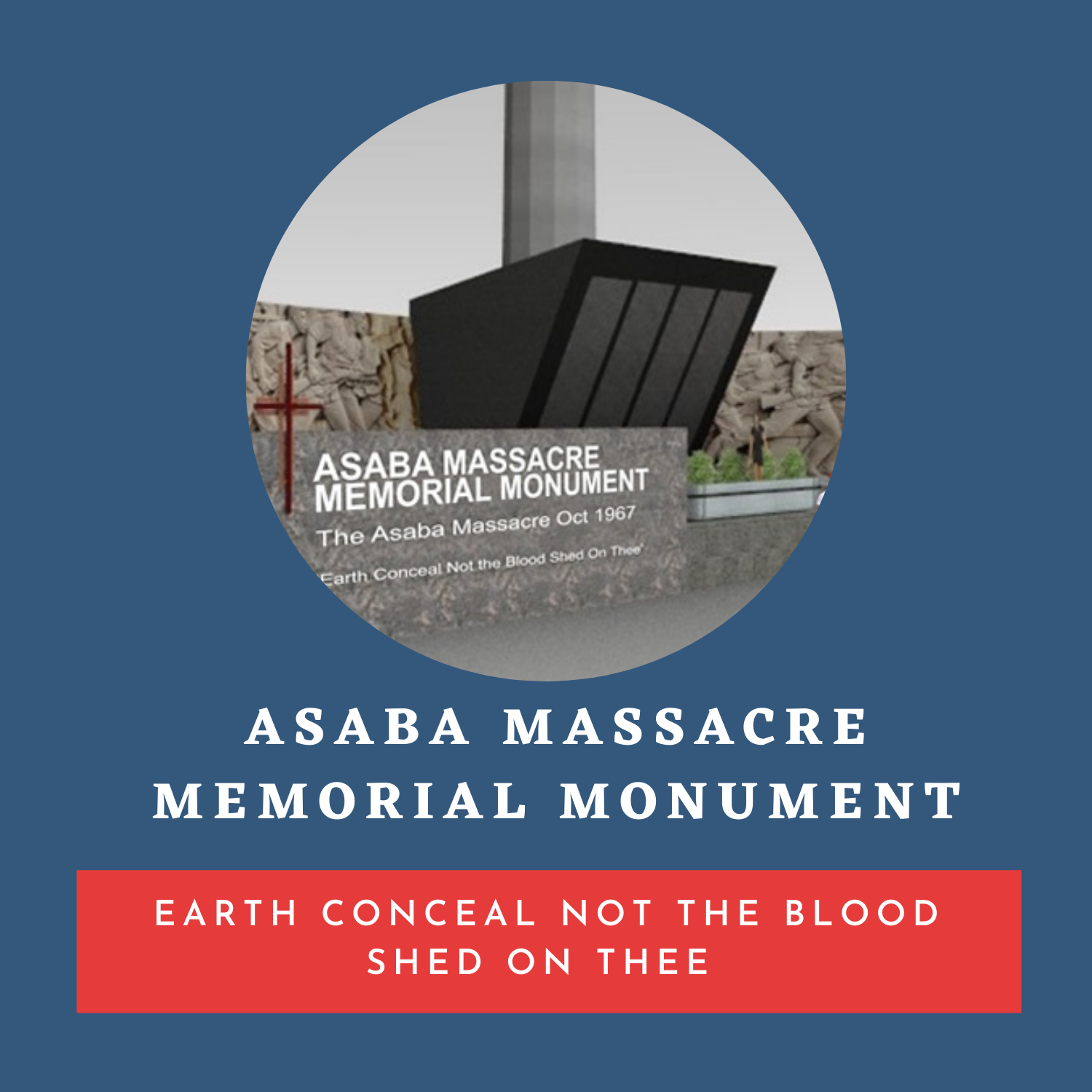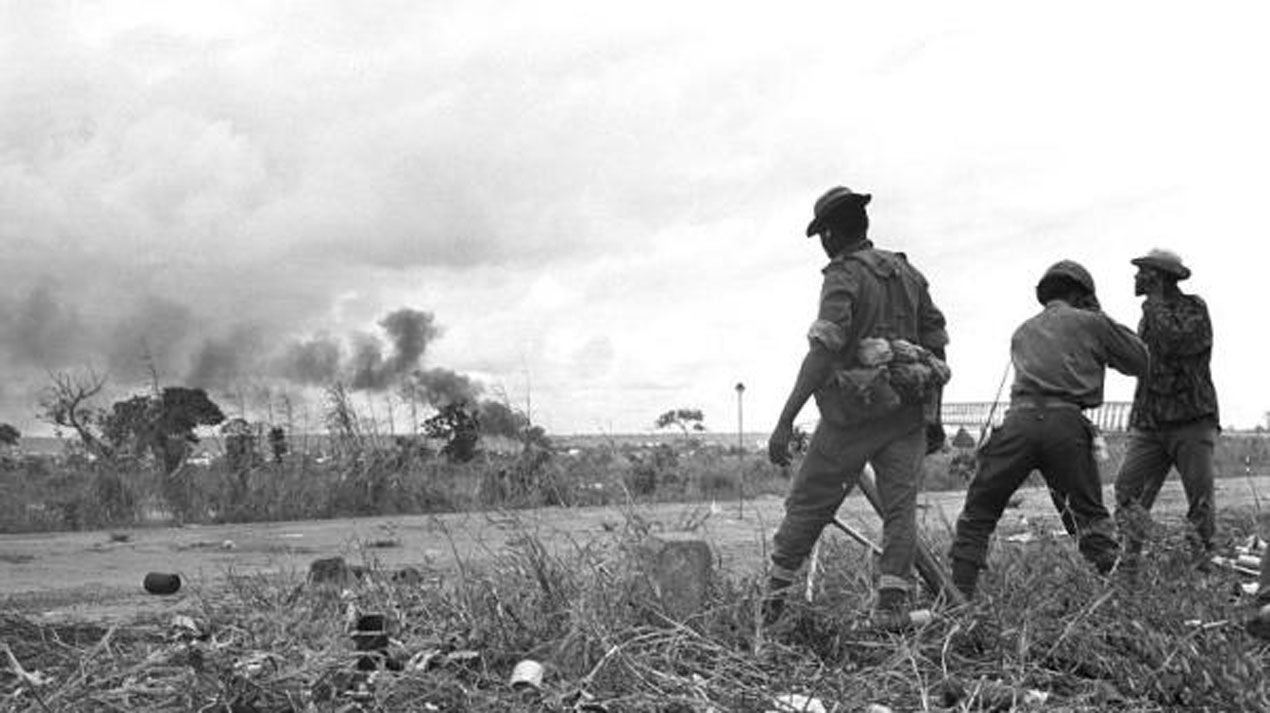Asaba Massacre OCT 1967
Asaba Massacre (October 1967)
From Wikipedia, the free encyclopedia
The Asaba Massacre occurred in early October 1967, during the Biafran War, fought over the secession of Biafra (the predominantly-Igbo, former Eastern Region of Nigeria). Asaba (Igbo: Àhàbà) has an interesting ancestral lineage(its origin is linked to Ugboma, Ezeanyanwu, and Nnebisi) though linguistically Igbo, it was never part of Biafra. The people of Asaba typically identify as Anioma.
In August 1967, three months into the Biafran War, Biafran troops invaded the Midwest Region, to the west of the River Niger. They spread west, taking Benin City and reaching as far as Ore, where they were pushed back by the Nigerian Second Division, under the command of Col. Murtala Muhammed.
The Federal troops gained the upper hand and forced the Biafrans back to the Niger, where they crossed the bridge back into the Biafran city of Onitsha, which lies directly across from Asaba. The Biafrans blew up the eastern spans of the bridge so that the Federal troops were unable to pursue them.
Massacre
The Federal troops entered Asaba around 5 October and began ransacking houses and killing civilians, claiming they were Biafran sympathizers. Reports suggest that several hundred may have been killed individually and in groups at various locations in the town.
Leaders summoned the townspeople to assemble on the morning of 7 October, hoping to end the violence through a show of support for “One Nigeria.” Hundreds of men, women, and children, many wearing the ceremonial akwa ocha (white) attire paraded along the main street, singing, dancing, and chanting “One Nigeria.” At a junction, men and teenage boys were separated from women and young children and gathered in an open square at Ogbe-Osowa village. Federal troops revealed machine guns, and orders were given, reportedly by Second-in-Command, Maj. Ibrahim Taiwo, to open fire. It is estimated that more than 700 men and boys were killed, some as young as 12 years old, in addition to many more killed in the preceding days.
The bodies of some victims were retrieved by family members and buried at home. But most were buried in mass graves, without appropriate ceremony. Many extended families lost dozens of men and boys. Federal troops occupied Asaba for many months, during which time most of the town was destroyed, many women and girls were raped or forcibly “married,” and large numbers of citizens fled, often not returning until the war ended in 1970. The total death toll during early October was in excess of 1,000, although the exact numbers will likely never be known.
Suspect
I.B.M. Haruna has sometimes been named as the officer who ordered the massacre, following a report of his testimony to the Nigerian Human Rights Violations Investigations Commission, known as the Oputa Panel.[1] This article quoted him as claiming responsibility (as the commanding officer) and having no apology for the atrocity. However, Haruna was not present in Asaba in 1967. He replaced Murtala Muhammed as C.O. of the Second Division in spring 1968.
In October 2017, the Asaba community marked the 50th anniversary of the massacres with a two-day commemoration, during which the new, comprehensive book on the massacre, its causes, consequences, and legacy, was launched: “The Asaba Massacre: Trauma, Memory, and the Nigerian Civil War,” by S. Elizabeth Bird and Fraser Ottanelli (Cambridge University Press). This book, which draws on interviews with survivors and military and government figures, as well as archival sources, discusses how and why the massacres happened, and the impact of this community trauma, decades after the event.
References
1. ^ (Vanguard, 10 Oct. 2001).
Bibliography
• Bird, SE and F. Ottanelli (2017). The Asaba Massacre: Trauma, Memory, and the Nigerian Civil War. Cambridge University Press.
• Bird SE and F. Ottanelli (2014). The Asaba Massacre and the Nigerian Civil War: Reclaiming Hidden History. Journal of Genocide Research 16 (2-3): 379-399.
• Bird SE and F. Ottanelli (2011). The History and Legacy of the Asaba, Nigeria, Massacres. African Studies Review 54 (3): 1-26.
External links
• [http://www.asabamemorial.org/ www.asabamemorial.org The Asaba Memorial Project website, which includes comprehensive information, video clips of witnesses, and other resources.
• https://vimeo.com/71894404, “Most Vulnerable Nigerians: The Legacy of the Asaba Massacres.” Video created as part of the Asaba Memorial Project]

